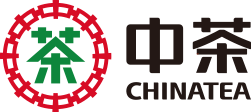CHINATEA Logo and Its Evolution
In 1938, the establishment of the "Yunnan CHINATEA Trade Co., Ltd." took place, with an English name as "The Yunnan Tea Corporation". The company's shareholders included the CHINATEA Corporation under the Ministry of Economic Affairs of the Republic of China and the Economic Commission of Yunnan Province.
Tea production was commenced in 1939. During this period, Shou Jingwei, the chairman of Yunnan CHINATEA, also held the position of general manager at the CHINATEA Corporation, while Zheng Hechun, the manager of Yunnan CHINATEA, was Shou Jingwei's brother-in-law. This led to a harmonious relationship between the two parties during the initial stages of establishment, and Yunnan CHINATEA often utilized the trademark of the CHINATEA Corporation.
In 1941, Shou Jingwei resigned from the general manager position at the CHINATEA Corporation. With the departure of this key figure, the relationship between the two companies became somewhat strained, promoting Yunnan CHINATEA to develop its own standard trademark. This unique trademark, distinctive to the company, was shield-shaped. Reflecting its Kuomintang background, the upper part of the circle featured the symbol of Chiang Kai-shek's New Life Movement, while the lower part showcased the abbreviation of "The Yunnan Tea Corporation" in a modified font.

After the liberation, the newly established CHINATEA Corporation emerged as a completely new entity. Despite the presence of former CHINATEA Corporation personnel, it refused to acknowledge any inheritance relationship with the previous entity. Consequently, the heavily Kuomintang-colored standard trademark of Yunnan CHINATEA faced initial prohibition from the CHINATEA Corporation, leading to the complete inheritance of the "Baoyan" trademark without the Kuomintang colors.

In 1950, Yunnan was liberated. After the CHINATEA Corporation took over Yunnan CHINATEA, the first step was to acquire products from private traders, and production by the company itself came a little later.
From the 1951 CHINATEA advertisements, it seems that Yunnan CHINATEA at the time used a new logo to emphasize that it was a member of CHINATEA, different from the old Yunnan CHINATEA which was an independent company with joint ownership. However, packaging or trademarks with this logo has not been seen.
In July 1952, the CHINATEA headquarters issued a notice to use the "Zhongcha Brand" trademark, which consisted of eight red "Zhong" characters surrounding a green "cha" character. The "Ba Zhong" trademark replaced the original shield-shaped standard trademark of Yunnan CHINATEA, and became part of the majority of Yunnan CHINATEA’s product trademarks or packaging.
The earliest "Ba Zhong" trademark has been seen so far appeared on the tag of the Fuxing brand tuocha from the Xiaguan Tea Factory in 1952. The use of this tag by Xiaguan Tea Factory was not standardized, as it contained two and a half wheat spikes within the red “Zhong” character. At the same time, the "Ba Zhong" trademark was also printed on Baoyan brand squeezed tea and Dongfeng brand compressed tea, and other products.
In order to cut costs, Yunnan CHINATEA Company also developed packaging for CHINATEA featuring red "Zhong" and "cha" characters. This type of packaging was discovered by Qi Zengpei, who was stationed in Yunnan by the CHINATEA Corporation around 1953 (some sources indicate 1954). To minimize waste, the kraft paper was not discarded. The inadvertent misuse of the trademark ultimately led Yunnan CHINATEA to produce the red-stamped tea cake, which has now become a hallmark of antique tea.
During the 1980s, the CHINATEA Songhe trademark was introduced through the export of tea, while Jixing trademark appeared in the domestic market. With the liberalization of management rights, several tea factories of CHINATEA also started registering their own trademarks, including Dayi from Menghai, Songhe, Cang’er, Fengqing's Feng brand from Xiaguan. This period marked a vibrant and prosperous era for trademarks in the tea industry.
